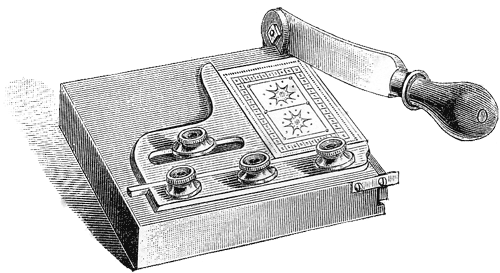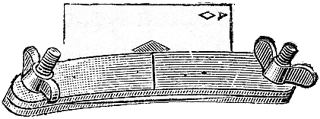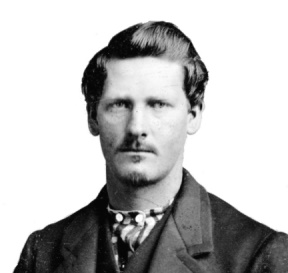|
Listen to this blog post here
Getting your Trinity Audio player ready...
|
1700s-1950s
Faro stands out in U.S. gambling history. The imported card game dominated the industry here for a long time, about 100 years. “Tiger” was the country’s favorite gambling pastime during the 1800s, though played before and after. Men couldn’t get enough of it. It was ubiquitous.
Faro also is noteworthy for being the game in which the first rampant cheating at cards occurred in the States.
“No other card or dice game, not even poker or craps, has ever achieved the popularity in this country that faro once enjoyed, and it is extremely doubtful if any has equaled faro’s influence upon American gambling or bred such a host of unprincipled sharpers,” author Herbert Asbury wrote in Sucker’s Progress.
Shaving, Pricking, Sanding
The first cheating tricks in faro involved altering the playing cards. Sharpers could buy all types of prepared cards. However, the careful gamblers invested in shears, knives and trimming plates and modified the decks themselves.
One method was trimming certain cards in each suit in specific ways with shears. These cards are called strippers. The deck containing them was a stripped deck. The amount shaved off the cards was minute, about 1/16 or 1/32 of an inch in width.

Trimming shears
One type of strippers is wedges. Using shears, the sharper trimmed both long sides to make them narrower at one end, say the bottom, than at the other, the top. Ends are similar but instead of the sides being shaved, the ends, or short sides, were.
Then there are hollows and rounds, or bellies. With these, certain cards were cut using trimmer plates to be round, wider across the middle and tapered slightly toward the ends. The remaining cards were cut in the opposite manner, to be hollowed out, narrower in the middle and wider at the ends. Concave and convex are similar but their ends, instead of their sides, were modified.

Stripping plate
Cheaters also marked cards, known as readers. One way of doing this was making pinpricks in them, which the dealer could feel with a finger.
Sometimes cheaters roughened one side of certain cards. This made them better adhere to one another and, thus, easier to deal two at a time. This subtle texture was achieved with emery paper; spermaceti, a waxy substance sperm whales produce; a pumice stone; or a rosin-glass mixture.
Definite Advantages
With prepared cards, the cheater could stack the deck as desired and, thereby, know at all times which cards were where in it. Oftentimes in faro, he altered cards below seven and keep those separated at the top of the deck from the rest in the bottom. As needed, he took a card from the top and another from the bottom at one time. Sometimes, he hid one of two cards in his hand until he wanted to use it.
“Card sharping has been reduced to a science,” wrote John Maskelyne in Sharps and Flats. “It is no longer a haphazard affair, involving merely primitive manipulations, but it has developed into a profession in which there is as much to learn as in most of the everyday occupations of ordinary mortals.”
Advancement in Cheating
An American invention came along in the 1820s that allowed the sharper to better conceal his faro cheating tricks — the dealing box.

It led to a permanent change in how cards were dealt in the game. Beforehand, bankers dealt them from a face down deck in their left hand. Afterward, bankers dealt them from a face up deck in a dealing box.
“The motives for changing this game from the hand to the box were as base and nefarious as any that ever actuated the ingenious but wicked gambler; his object was nothing less than to be absolutely sure of stripping completely every man that should bet again him,” wrote self-described reformed gambler Jonathan H. Green in Gambling Exposed.
Evolution of Dealing Boxes
A Virginian and notable card player named Major Robert Bailey designed the first dealing box in 1822. Made out of brass, it was a bit longer and wider than a deck of cards. The lid contained a small oblong hole in the middle for the dealer to insert his thumb or a finger and push a card out the slot on the side. This box didn’t catch on widely, though, because the top card couldn’t be identified.
Three years later, a Cincinnati, Ohio-based watchmaker, Joseph “Joe” Graves, debuted a variation in which the top card was fully visible. Casinos and faro dealers widely adopted this iteration, and over time, it became the standard.
Soon after Graves’ dealing box hit the market, a number of crooked ones appeared. The San Francisco, California-based company Will & Finck, for instance, manufactured 19 different kinds of boxes, only three of which weren’t rigged. Graves also made and sold crooked dealing boxes.
Variations on the Device
Over time, these contraptions became more and more ingenious.
“Some were intricate contrivances of springs, levers, sliding plates, thumb screws and needle-like steel rods,” Asbury wrote.
The coffee mill, or crank box, for example, allowed the cheater to deal the second, rather than the first, card.
With the lever box, the cheater pushed an outside screw that activated a blade inside to thrust out the two top cards. Similarly, with a balance top, when the banker pressed down on one corner of it, the slot, or mouth, opened wider than usual, and he expelled two cards at once.
Yet another dealing box contained a spring mechanism that made a grinding noise only when it came into contact with a rounded card.
Other box variations included the tongue tell, sand tell, top sight tell, end squeeze, screw box, needle squeeze, lever movement and horse.
“Occasionally one of the gadgets got out of order and caused considerable embarrassment to the unlucky sharper who owned it, but as a result they worked perfectly in the hands of competent operators,” noted Asbury.
A Pretty Penny
Honest dealing boxes were about $20 a pop, but the rigged boxes cost as much as $200 for one. Louis David of Natchez, Mississippi, also a watchmaker, got wealthy in the 1840s selling his tongue-tell boxes made out of German silver for $125 to $175 apiece.
Wicked Combination
The use of altered cards in conjunction with gaffed dealing boxes took cheating at faro to a new level. With both, the sharper could deal two cards at a time, deal a card to lose when play on it to win was heavy and arrange the last turn such that it maximally benefitted the bank, among other tactics.
“The advantages thus given the dealer were so widely used that cheating soon became as much a part of faro in America as a pack of cards,” Asbury wrote.






